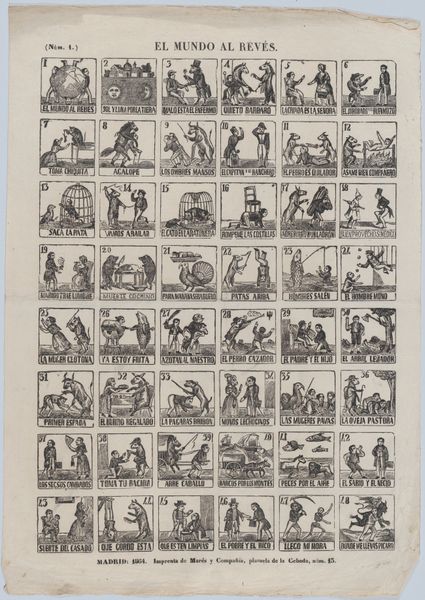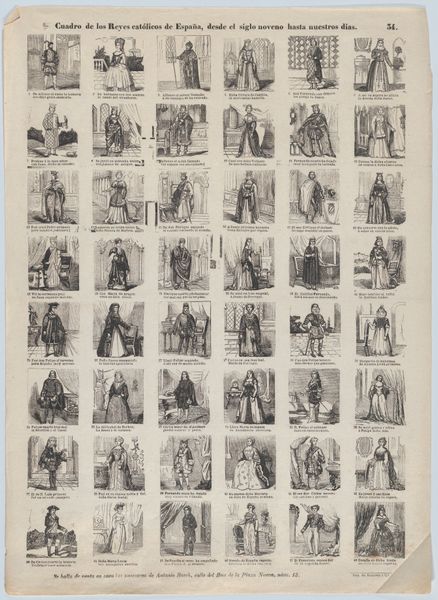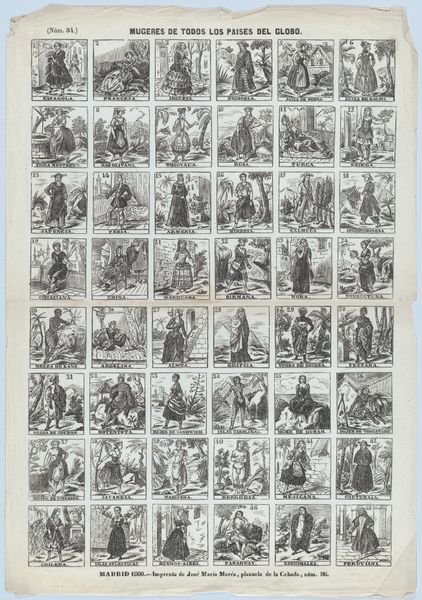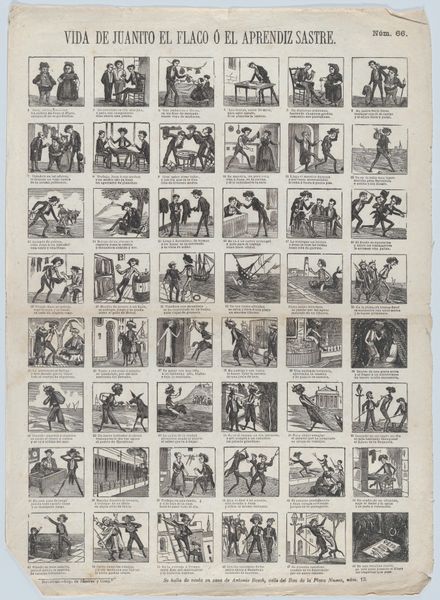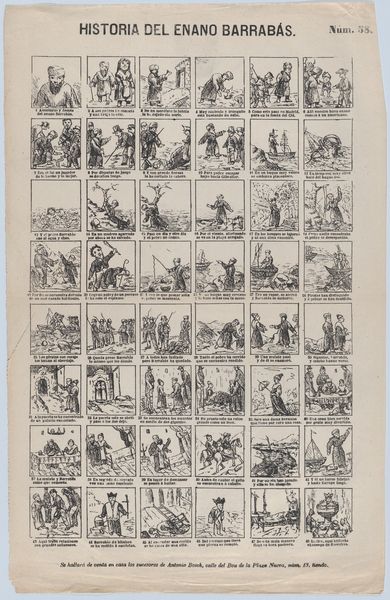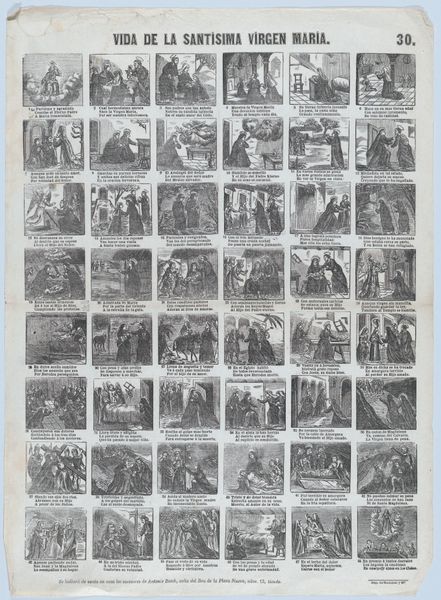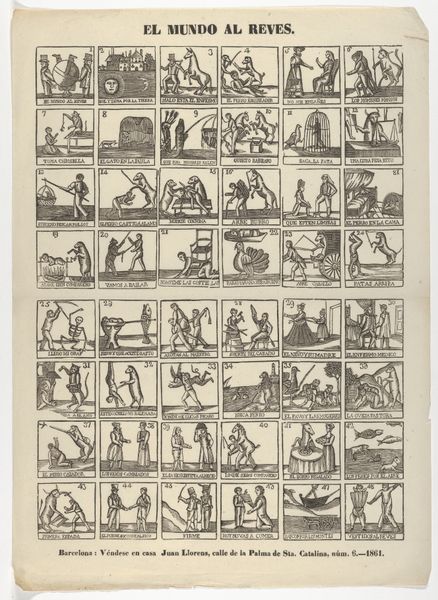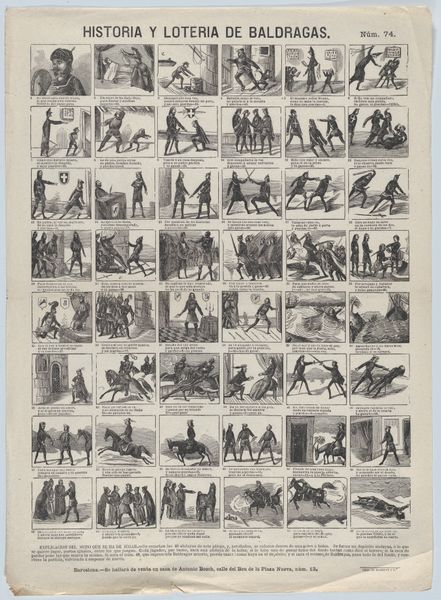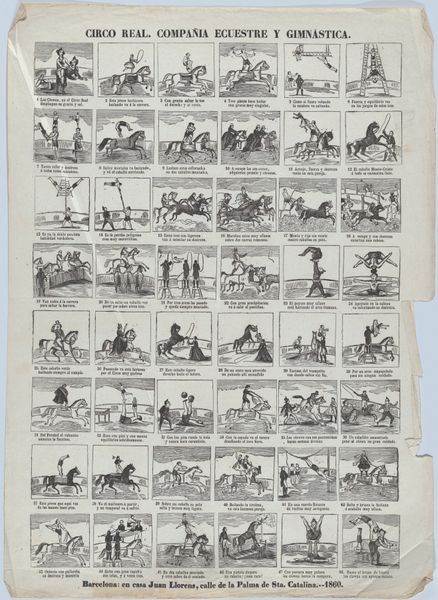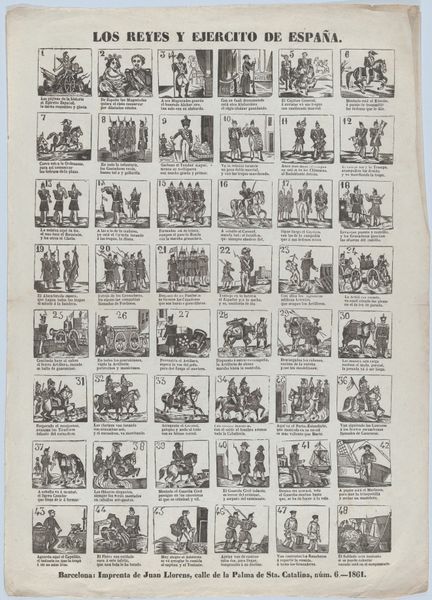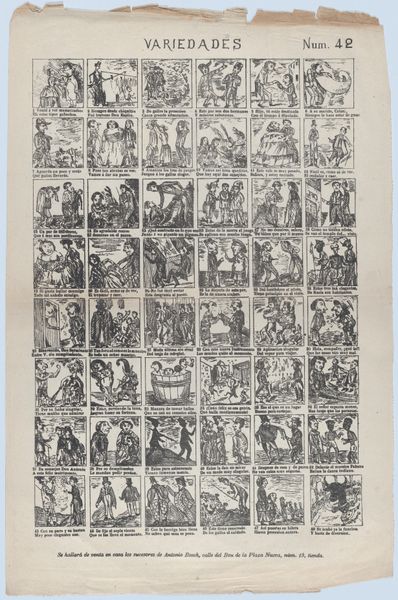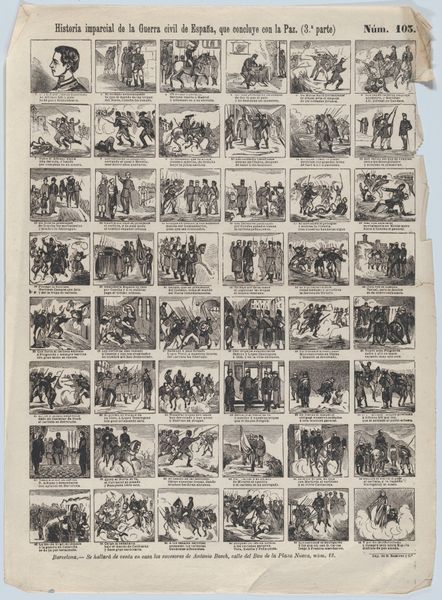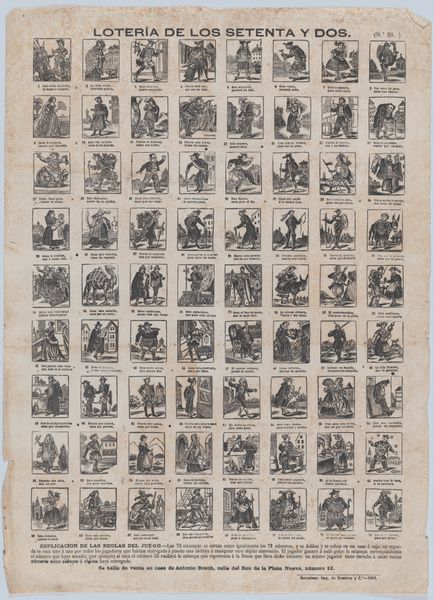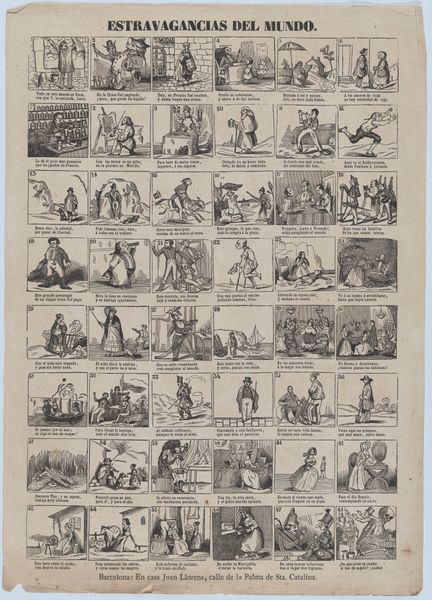
Broadside with 48 scenes depicting the people of the world 1860
0:00
0:00
drawing, print
#
portrait
#
drawing
# print
#
history-painting
#
academic-art
Dimensions: Sheet: 17 1/8 × 12 3/16 in. (43.5 × 31 cm)
Copyright: Public Domain
Curator: This fascinating print, created in 1860 by José María Marés, titled "Broadside with 48 scenes depicting the people of the world," offers a glimpse into how cultures across the globe were perceived in the mid-19th century. Editor: My first impression is that of a somewhat sterile catalogue. The sheer number of rigidly posed figures, neatly organized in a grid, makes me feel like I'm observing specimens pinned for display rather than representations of living cultures. Curator: That's a keen observation. The visual language definitely leans into a mode of cataloguing and displaying difference, typical of that period's encyclopedic ambitions, a quest for knowledge coupled with imperialist ideologies. The work also points to how prints at that time facilitated the dissemination of information, visually encoding power dynamics across the globe. Editor: Exactly. Each miniature portrait, rendered through drawing and then print, feels like a generalization, solidifying stereotypes rather than offering genuine insight into diverse experiences and subjectivities. I'm especially drawn to consider who is missing from the frame, those deliberately overlooked within these dominant narratives. Curator: Yes, we have to acknowledge how visual materials such as these can further colonial projects through defining “otherness.” At the same time, these printed ephemera also provide historians with primary source material about the public roles of art in disseminating information in mid-19th-century Spain. Editor: And it invites reflection about the ethics of representation then, as now. What responsibilities do artists, and the institutions that exhibit these works, have in promoting more nuanced and empathetic ways of seeing? Curator: Indeed. This broadside, while visually concise, presents a myriad of complex questions about cultural exchange, representation, and the historical forces shaping perceptions across societies. Editor: And considering the work critically offers invaluable context for discussions of diversity, equity, and the visual encoding of global cultures in museums today.
Comments
No comments
Be the first to comment and join the conversation on the ultimate creative platform.
